Old West Eats: The Sourdough Edition
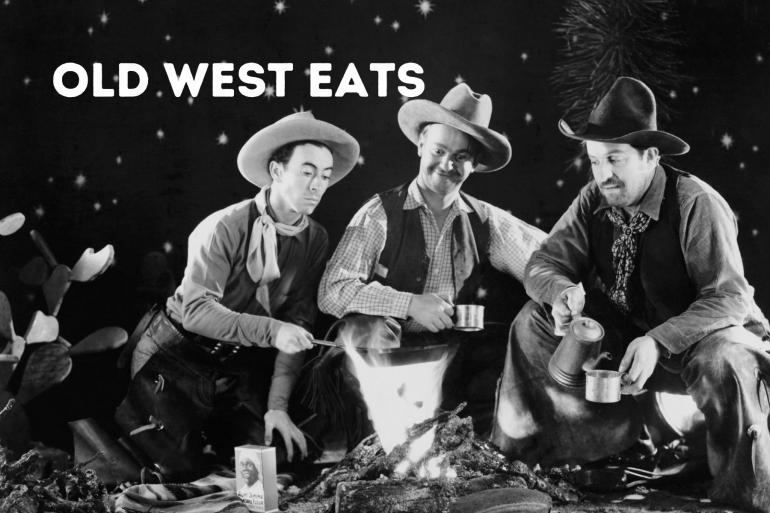
I don’t much care for baking. My personal interest in it starts and ends with The Great British Bake-Off. Watching complete strangers go off the deep end over things I know nothing about—kneading techniques, dough plaiting, the virtues and drawbacks of egg washes—just does it for me when it comes to stress relief. But as far as educational value, it’s in one ear and out the other. Apart from the occasional batch of Christmas cookies, I go to hardly any effort on the baking front.
My mom was a professional baker, working from 2 am onwards to make the breakfast pastries that people would grab on their way to work. I would stop to see her on my walk to school, helping myself to a complimentary muffin and lingering for a while in the bakery’s warm, sun-dappled interior. This ritual was a source of comfort and consistency in my childhood.
So when my fiancé pointed out last April that everyone and their grandma were making sourdough bread, posting sepia-toned photos of their finished loaves on social media, and extolling the calming effects of that newfound hobby on their mental state, I figured, why not? Let’s jump on the bandwagon. How hard could it be if Instagram influencers are doing it?
Besides, I had a leg up for having watched my mom bake for years. Maybe it would just click two minutes in, like some kind of ancestral muscle memory, my gastronomical birthright. Maybe this is what had been missing from my life all along, and all it took was a pandemic and a nationwide lockdown for me to realize it.
It wouldn’t take me too long to understand just how very, very wrong I was.
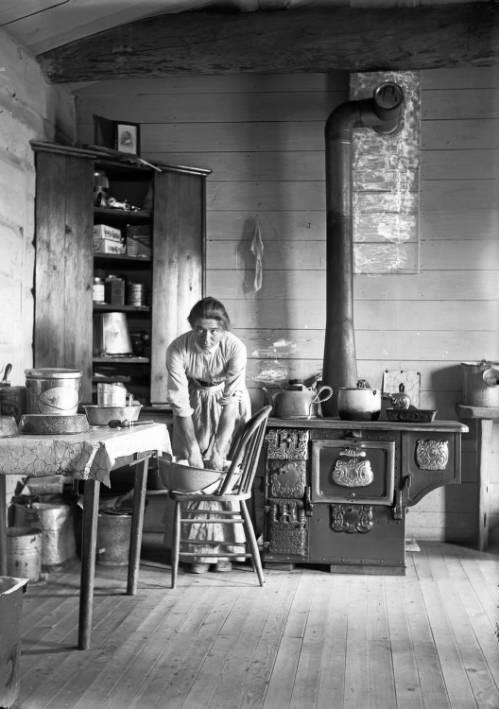
Her face says it all. Montana photographer Evelyn Cameron making bread at home.
Source: Montana Memory Project
The History of Sourdough
Though the nomenclature of sourdough is relatively recent, leavened breads have been around for millenia, at least since 1,000 B.C. What distinguishes leavened bread from unleavened bread is the use of a raising agent like baking powder, baking soda, or yeast, or even buttermilk, beer, or yogurt—anything that will make the dough lighter, fluffier, and bigger. The first leavened or fermented bread was probably made by accident, when the standard sludge of flour and water was left out for longer than usual and wild yeast drifted in and started growing. Hence the birth of the first preferment, or pre-ferment, which goes by lots of other names, too: starter, levain, biga, poolish, or simply the mother.
Commercial yeast wasn’t invented until the late nineteenth-century in France, and in the western United States, it was basically impossible to find until decades after that. So when pioneers, prospectors and hardened outlaws wanted to make leavened breads, which were vastly tastier and more nutritious than flatbreads, they depended on wild yeasts for their starters.
Attributed to Goldrush miners in California is honor of making the world’s first “sourdoughs,” so named for the unique taste of the leavened breads made in San Francisco in the 1860s. The wild yeasts in the Bay area are responsible for the particular flavor of San Francisco sourdough, so much so that they even have the name of Lactobacillus sanfrancisensis. Although this particular yeast can actually be found all over the world, through a weird accident of climate, history, and alchemy, San Francisco gets to call this yeast its own.
The distinctive sourness may also have come from an old miner’s strategy for keeping their finicky starters alive: stowing the jar under their armpits to keep it warm through the frigid mountain nights.
An Incomplete Guide to Making Sourdough
1) The first thing you want to do is to make a starter, or if you feel comfortable calling out a favor for a measly loaf of bread, borrow a cup of starter from a crunchy friend who makes a point of keeping one in the back of their fridge. If you feel like getting fleeced, you could also blow eighty bucks on a cup of starter from some online rando who claims theirs was passed down directly from Joan of Arc. I know starters are technically supposed to last forever, but come on.
Personally, I prefer to save my favors in case I need some kidney transplants down the line, so instead I poured a packet of Fleischmann’s active dry yeast into a mason jar filled with equal parts warm water and whole wheat flour.
If I had been feeling more confident, I would have put the mason jar out on the back stoop sans the Fleischmann’s and let the wild yeasts of Montana do their work. But I decided to take a shortcut, because it was the middle of a pandemic, I had just filed for unemployment, and to be honest, I just needed to know something was going to work out. I wasn’t going to take my chances with nature, not this time.
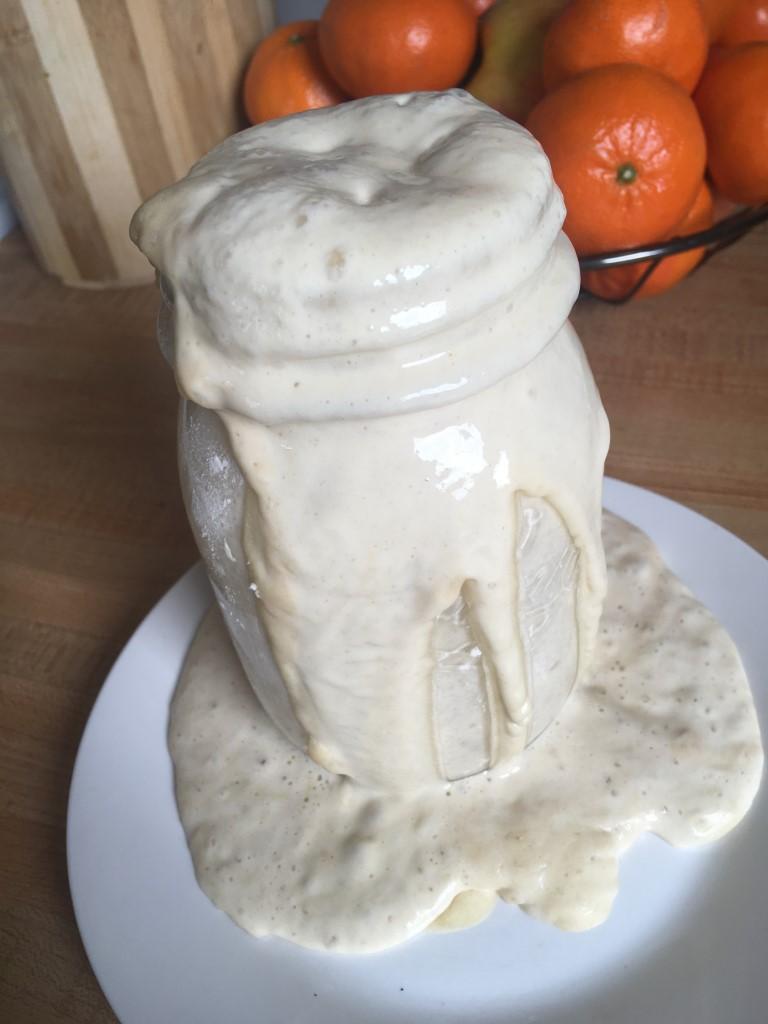
The results would have made a great advertisement for Fleischmann's.
Commercially-produced yeast is nothing if not reliable. In this case, maybe too reliable. While purists may frown upon it, using commercial yeast in starters is totally acceptable, according to my mom’s old standby recipe book, Bread Winners, published in 1979 and replete with black-and white photos of smiling old hippies living in lighthouses and kneading bread. If the hippies say it’s fine, it’s fine. If you do go the commercial yeast route, though, I advise getting a way bigger mason jar than you think you’re going to need.
A watery brown skin will form on top of your starter after a week or so. The hippies assure me this is normal, and to just stir it back in.
As a matter of fact, it turns out this skin is incredibly alcoholic, and the miners would just drink it down every couple weeks. So there’s one good motivation for not letting your starter die from neglect.
2) Make your sponge and let it rise overnight. Most recipes will advise you to make the sponge, or the wet and sticky mixture that makes your dough a “sour” dough, the night before. My sponge consisted of one cup starter, two cups flour, and a cup of warm water.
On The Great British Bake-Off, the contestants treat baking like an exact science, wherein ingredients are to be measured out like everyone’s wearing a lab coat instead of an apron smeared with chocolate.
While I respect this craft aspect of baking, I do wonder about those prospectors and pioneers and how much they cared about being exact. The whole point of starters was to bridge the gap in ingredients when flour was in short supply, so it’s hard to imagine a grizzled old miner painstakingly measuring out ingredients while camping in the middle of nowhere. I imagine it was much more of a makeshift event than the precious sourdough narratives recounted on Instagram last year. Not to mention all the other odds and ends that surely found their way into the dough in the process: sticks, mud, clumps of horsehair, maybe even some gold dust? That would definitely up the authenticity factor in my book, much more than a cute little flower carved into the top.
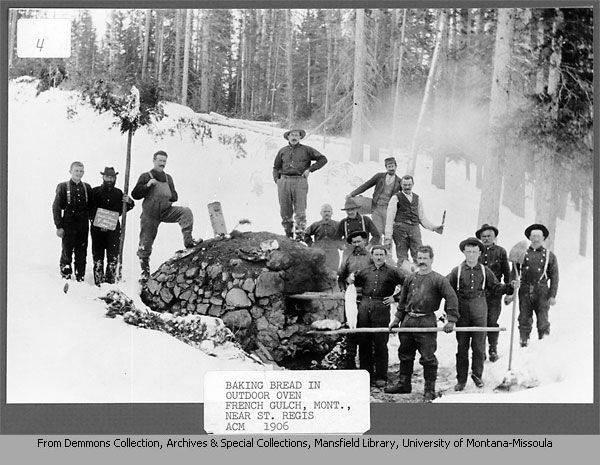
There are few sights sexier than that of a dozen dirty men gathered dutifully around an oven. Baking bread at French Gulch, 1906.
Jack L. Demmon's Photographs of Bonner, Montana. Source: Montana Memory Project.
3) The next day, make the dough. Add the starter from the night before to the dough ingredients, then knead the heck out of it until it is “smooth and elastic.” If it’s too dry, add more warm water. If it’s too wet, add more flour.
I trust that I’m not alone in being totally confused by these very basic instructions. What exactly does kneading entail? What is wet? What is dry?
I asked my mom for guidance, and she said that I would get a “feel” for it eventually. Not much help. So I did my best. My kneading technique involved stretching and slapping the dough around on the table like it was the mangled carcass of a loathed old boss. Then I set it aside to rise for an hour. Then I kneaded it again, letting it rise once more. If you are feeling particularly masochistic, you can repeat the process a third time.
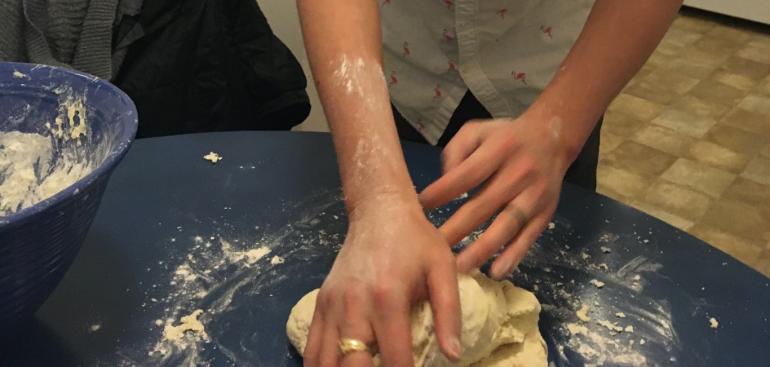
My fiance taking a turn at kneading the dough. Our technique was employing precisely no technique.
4) Then you finally get to put it in the oven. Again, I cannot imagine that sourdough miners would have gone to the trouble of kneading the dough and letting it rise multiple times while out in the middle of nowhere in a rainstorm or a snowstorm, but maybe I underestimate their bread-making tenacity.
Since we are fancy and bougie, we own a ceramic Dutch oven, so that’s what I used to bake it in, ostensibly to keep the bread from drying out, but also so I could make a cute post to Instagram with the hashtag #dutchovenlovin.
5) Give the bread to someone else, because no matter how cute it looks, it will probably be inedible. We gifted our first loaf to my fiancé’s coworker, who asked us to leave it in the trunk of his car so it could self-sterilize for a couple days before he ate it—remember, this was last April when the pandemic was still novel enough to scare us. The bread was already so hard that we could have probably thrown it through the windshield, but we were polite and didn’t.
A couple of days later, he texted to let us know that the bread was “pretty good,” but that he had to soak it in a bowl of soup for an hour before even thinking about eating it. Luckily for my baking reputation, I was able to convince him that the 48-hour quarantine in his car trunk was to blame for the bread’s texture. I didn’t tell him that the bread had come out of the oven rock-hard already.

An Instagram-worthy finished product!
I would not discourage anyone from trying to make sourdough bread. It was definitely not a life-changing experience for me, as it seems to be for everyone else on the Internet, but it wasn’t entirely a waste of time, either. For one thing, I have even more respect for my mom’s skills. And instead of taking the sourdough legend at face value, I can now consider the day-to-day obstacles that people in the Old West had to deal with just trying to make a loaf of bread.
Where did they knead their bread? On top of a rock? And how did they keep that wet, sticky dough free of horsehair and dirt? Maybe they didn’t. Maybe that’s what’s missing from my sourdough recipe; I think I’ll add a few extra ingredients the next time around.




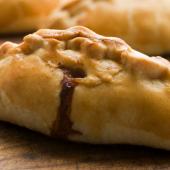

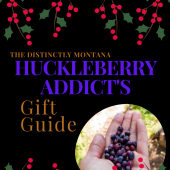
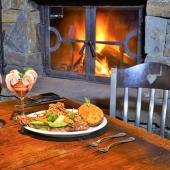
Thanks again.
- Reply
Permalink